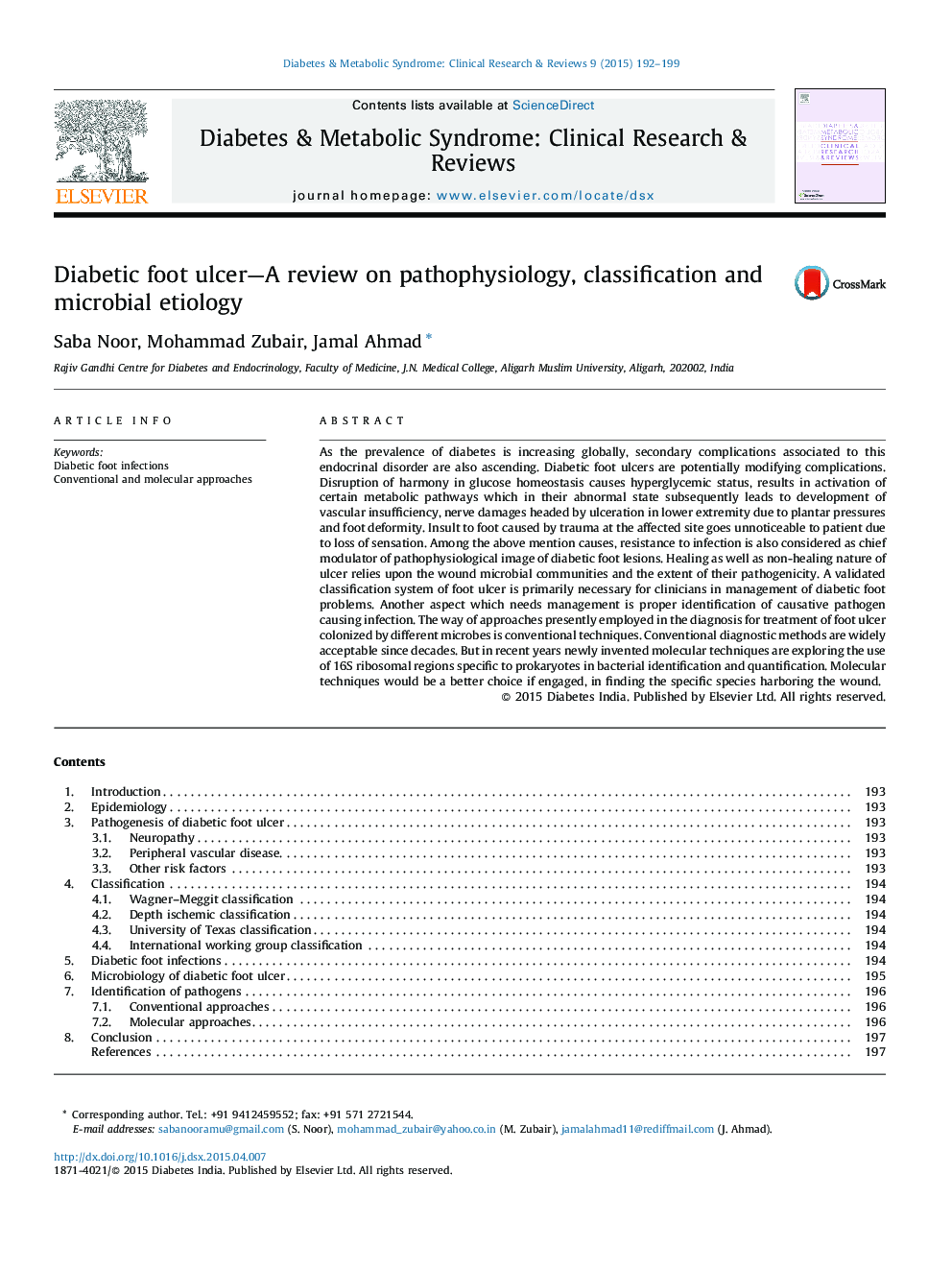| Article ID | Journal | Published Year | Pages | File Type |
|---|---|---|---|---|
| 2909851 | Diabetes & Metabolic Syndrome: Clinical Research & Reviews | 2015 | 8 Pages |
As the prevalence of diabetes is increasing globally, secondary complications associated to this endocrinal disorder are also ascending. Diabetic foot ulcers are potentially modifying complications. Disruption of harmony in glucose homeostasis causes hyperglycemic status, results in activation of certain metabolic pathways which in their abnormal state subsequently leads to development of vascular insufficiency, nerve damages headed by ulceration in lower extremity due to plantar pressures and foot deformity. Insult to foot caused by trauma at the affected site goes unnoticeable to patient due to loss of sensation. Among the above mention causes, resistance to infection is also considered as chief modulator of pathophysiological image of diabetic foot lesions. Healing as well as non-healing nature of ulcer relies upon the wound microbial communities and the extent of their pathogenicity. A validated classification system of foot ulcer is primarily necessary for clinicians in management of diabetic foot problems. Another aspect which needs management is proper identification of causative pathogen causing infection. The way of approaches presently employed in the diagnosis for treatment of foot ulcer colonized by different microbes is conventional techniques. Conventional diagnostic methods are widely acceptable since decades. But in recent years newly invented molecular techniques are exploring the use of 16S ribosomal regions specific to prokaryotes in bacterial identification and quantification. Molecular techniques would be a better choice if engaged, in finding the specific species harboring the wound.
